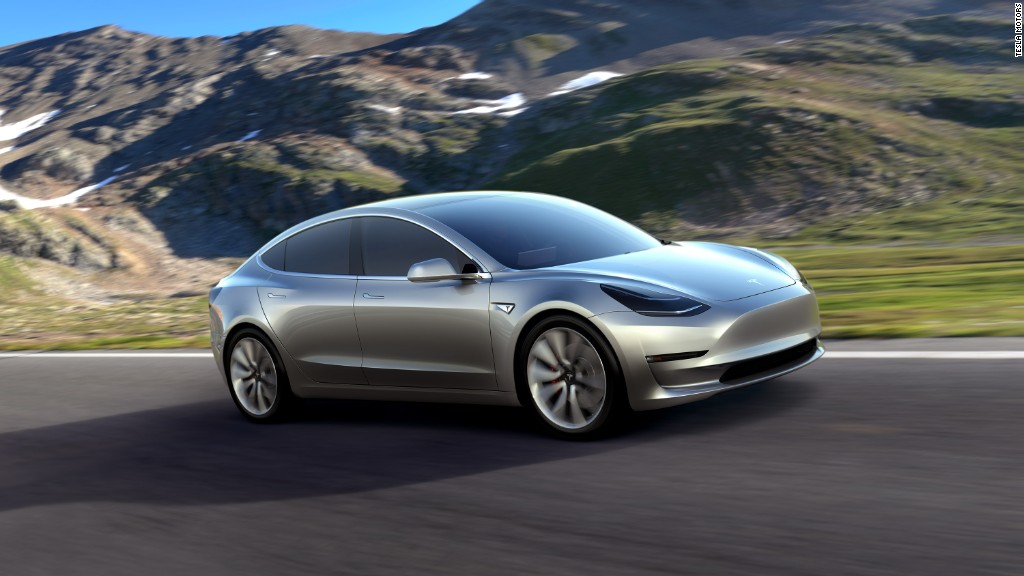
Lots of Tesla buyers are banking on fat tax credits to make the Model 3 even more affordable. But they shouldn't.
Anyone who buys a plug-in car in the U.S. today is eligible for a federal tax credit of up to $7,500. That's more than 20% of the Model 3's $35,000 starting price.
But that tax credit won't last forever -- in fact, it's only good on the first 200,000 U.S. cars that any manufacturer sells.
And it looks like the tax credit could start phasing out for Tesla buyers just as it ramps up production of Model 3's in early 2018.
That could put a huge dent in demand said Karl Brauer, senior analyst with Kelley Blue Book. More than 40% of car buyers interested in a Model 3 told a KBB survey that they wouldn't buy a one without the tax credit.
"You've got people counting on the tax credit and they'll be frustrated when they discover it's gone," Brauer said.
A Tesla spokeswoman said the company won't speculate on when the tax credit will run out for its buyers.
Related: Tesla got 200,000 orders for the Model 3 in first day
"We are committed to providing customers with up-to-date information about current incentives at the time of purchase, we'll do the same when it's time for customers to confirm their Model 3 orders," said Tesla spokeswoman Khobi Brooklyn. "Most importantly, we build our vehicles, including Model 3, to offer compelling value without any incentives."
Buyers qualify for the tax credit when they actually buy the car, not when they put down a $1,000 deposit to place an order. There are also state tax credits for electric car buyers that will continue to be available even after the federal tax credit expires.
Tesla (TSLA) CEO Elon Musk says even he has been surprised by the level of demand for the Model 3 so far. About 276,000 customers have put down deposits to reserve a car in less than a week.
The loss of the credit could become a competitive disadvantage for the Model 3. The comparably priced electric Chevrolet Bolt is due to go on sale early next year. It's likely General Motors (GM) will keep its tax credit for months, or perhaps a year or more, after Tesla.
"I think it would be easy to see the Bolt pulling away a quarter of the demand for the Model 3," said Brauer.
Tesla has sold about 125,000 cars globally through the end of March, all of them electric. But it hasn't said how many of those sales were in the U.S. and received the tax credit. Revenue figures indicate that probably about half were in the U.S. and will count against the limit.
Related: Tesla reveals its Model 3, its first car for the masses
But Tesla's production is growing fast, and it will probably sell more than 100,000 more cars to U.S buyers by the end of 2017, when the Model 3 starts rolling off of the assembly line. That means sometime in early 2018 it could hit the 200,000 sales mark in the U.S.
The tax credit won't disappear overnight. Assuming Tesla reaches that threshold in the first quarter of 2018, its buyers would get the full tax credit during the second quarter of 2018. The credit will fall by 50% to $3,750, during the second half of 2018, and to $1,875 during the first half of 2019.

